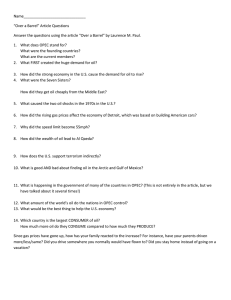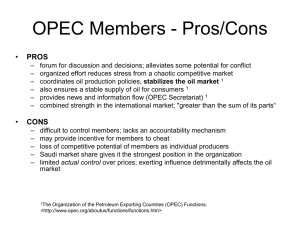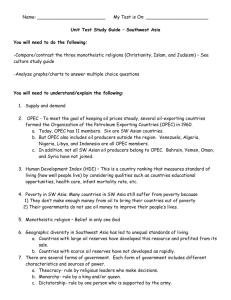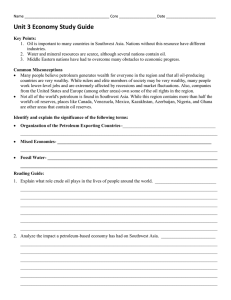Regis Jesuit High School Model United Nations Conference Regis XV
advertisement
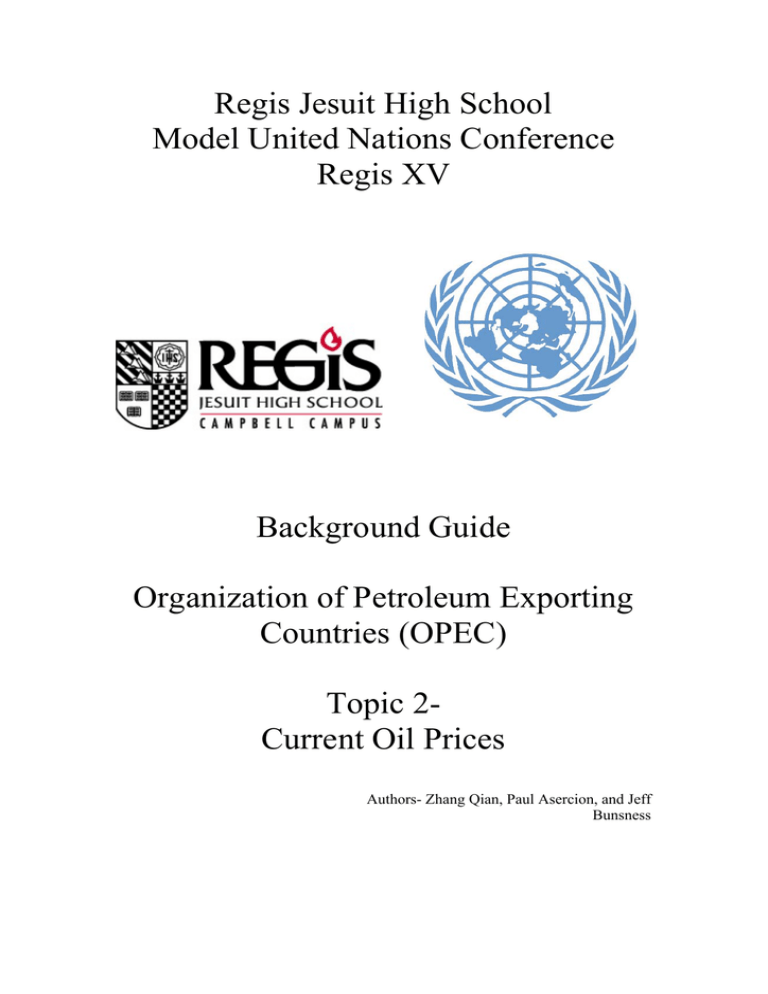
Regis Jesuit High School Model United Nations Conference Regis XV Background Guide Organization of Petroleum Exporting Countries (OPEC) Topic 2Current Oil Prices Authors- Zhang Qian, Paul Asercion, and Jeff Bunsness Overview: With the development of alternative fuel sources, rise of oil production in non-OPEC nations like Russia, and the attempts of governments to cut carbon emissions, OPEC faces many new possibilities and challenges in the 21st Century. OPEC wants to maximize the profits of its member countries while still keeping oil prices at levels nations around the world could afford. This pricing goal has been a sensitive region of conflict between OPEC and the rest of the world and even between OPEC nations. Countries with relatively small reserves and large populations have been calling passionately for a rise in production in order to increase their earnings. Countries with relatively small populations and large reserves, however, have opposed the rise in production. Factors: There are a number of factors that contribute to the increase in prices. “Inflation, currency exchange, fluctuations between the dollar and the Euro, the demand itself, the reduced spare capacity - all of these things” (Dr. Adnan Shihab Eldin) influence the cost of petroleum. Of all the factors contributing to oil prices, production level is the most important. Therefore, OPEC has placed strict limitations on the amount of oil produced to maintain control over the cost of petroleum. The production level and oil cost relationship is the classic situation of supply and demand. The future production levels can be estimated from the following: z From now to 2020, world oil consumption will rise by about 60%. (Institute for the Analysis of Global Security) z By 2025, the number of cars will increase to well over 1.25 billion from approximately 700 million today. z Global consumption of gasoline could double in the next two decades. In more recent years, the main driving force behind the rise of production levels has been rapidly developing nations like India and China. z China and India’s populations combined account for a third of the world. z In the twenty years, China's oil consumption is expected to grow at a rate of 7.5% per year and India’s 5.5%. A titanic number when compared to the 1% growth for the industrialized countries). z “It will be strategically imperative for these countries to secure their access to oil.” (Institute for the Analysis of Global Security) The demand outputs of China and India have kept OPEC nations happy by allowing price of petroleum to remain high. However, with the dawn of the current economic crisis, the price of oil has taken a rather fickle nature. Despite OPEC’s best attempts to keep prices high by reducing production, the price of oil has dropped. The decrease of oil cost is also attributed to the violation of OPEC production limits by many nations to increase profit. To discourage over-production, OPEC set penalties for violating the set production limit. However, the current penalties are not enough to stop many countries from producing more oil than OPEC allows. Future: Although OPEC has lost influence due to the slowing down of the global economy, OPEC still holds considerable force in world wide business and will play a crucial part the recovery of the world economy. Questions to Consider: 1. Whether to raise or lower production levels. 2. More severe penalties for over production. 3. How to maintain or increase influence of OPEC despite the lowering of its dominance over market.
